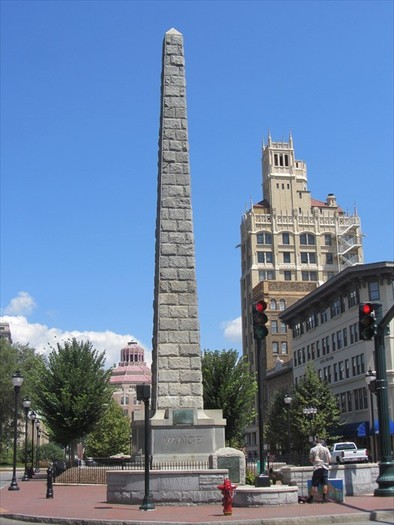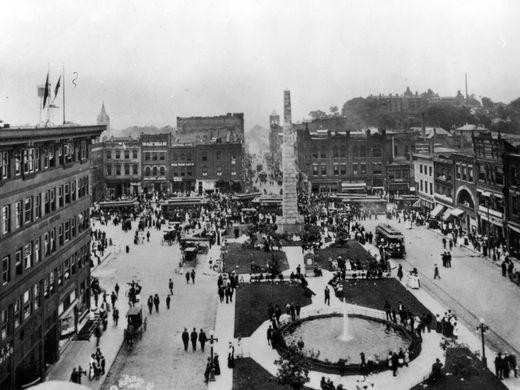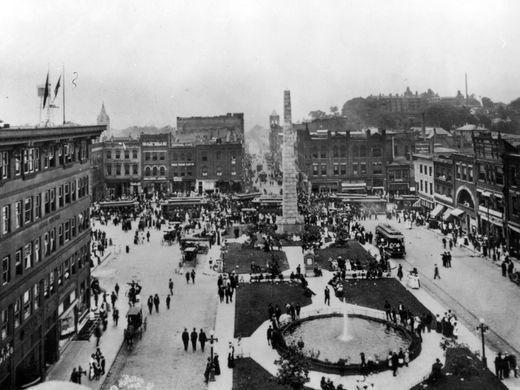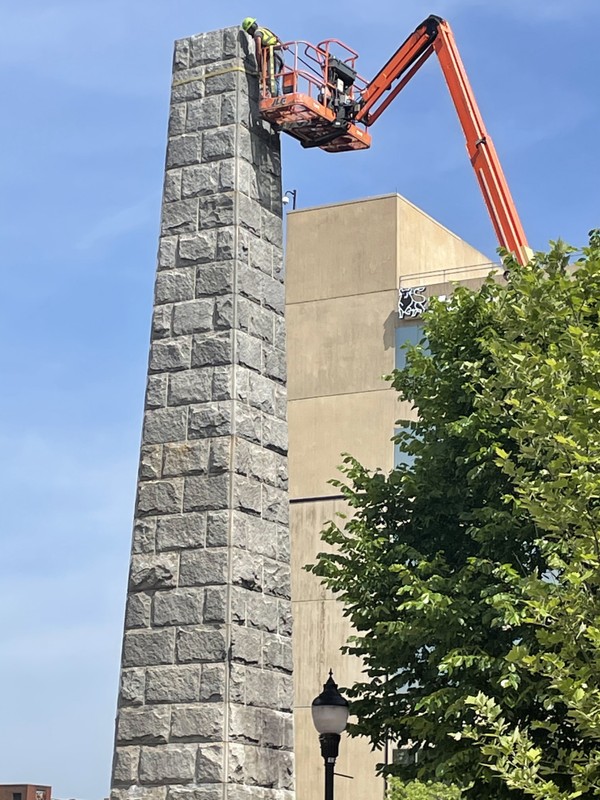Vance Memorial Obelisk (1897-2021)
Introduction
Text-to-speech Audio
Images
This monument was built in honor of Zebulon Vance, the Confederate Governor of North Carolina during the Civil War.

The Papers of Zebulon Baird Vance: Volume I, 1843-1862-Click the link below for more info about this book

The Vance Monument and downtown Asheville in 1913.


Workers removing the obelisk in May 2021

Backstory and Context
Text-to-speech Audio
Zebulon Vance was born in 1830 at his family's farmhouse near Asheville. Upon graduation from the University of North Carolina at Chapel Hill, he studied law and was admitted to the bar in 1852. Vance served as the county's attorney for a number of years before running for an open seat in the state legislature. In 1857, Vance was appointed to complete the term of United States Congressman Thomas L. Clingman. The following year, he successfully ran for election and continued to represent this section of North Carolina when the state leaders decided to join South Carolina and other states in leaving the republic and forming a new government. After serving as a colonel in the first year of the Civil War, Vance won election to the governorship.
Despite being arrested following the conclusion of the war he and other Southern leaders were allowed to return to their homes under the condition that they would refrain from politics, forswear the rebellion, and promise to support the United States government. However, Vance and other Southern rebel leaders were back in politics in the 1870s. Vance won election to the governorship during Reconstruction and oversaw a period of violent voter suppression that saw the return of many former planters and Confederate leaders to office.
Upon their return to office, they sought to return the South to a state of dependency upon the planter elite and opposed all efforts to assist African Americans in their transition from slavery to citizenship. Vance and others might not of assisted the Ku Klux Klan and other terrorist organizations that prevented African Americans from voting, but they owed their election to the suppression of Black votes. With the effective destruction of North Carolina's Republican Party, Vance was practically unopposed in his Senatorial Campaign in 1879. He served in the United States Senate until his death in 1894.
Sources
Mobley, Joe A. ”War Governor of the South”: North Carolina's Zeb Vance in the Confederacy. Gainesville: University Press of Florida, 2005.
